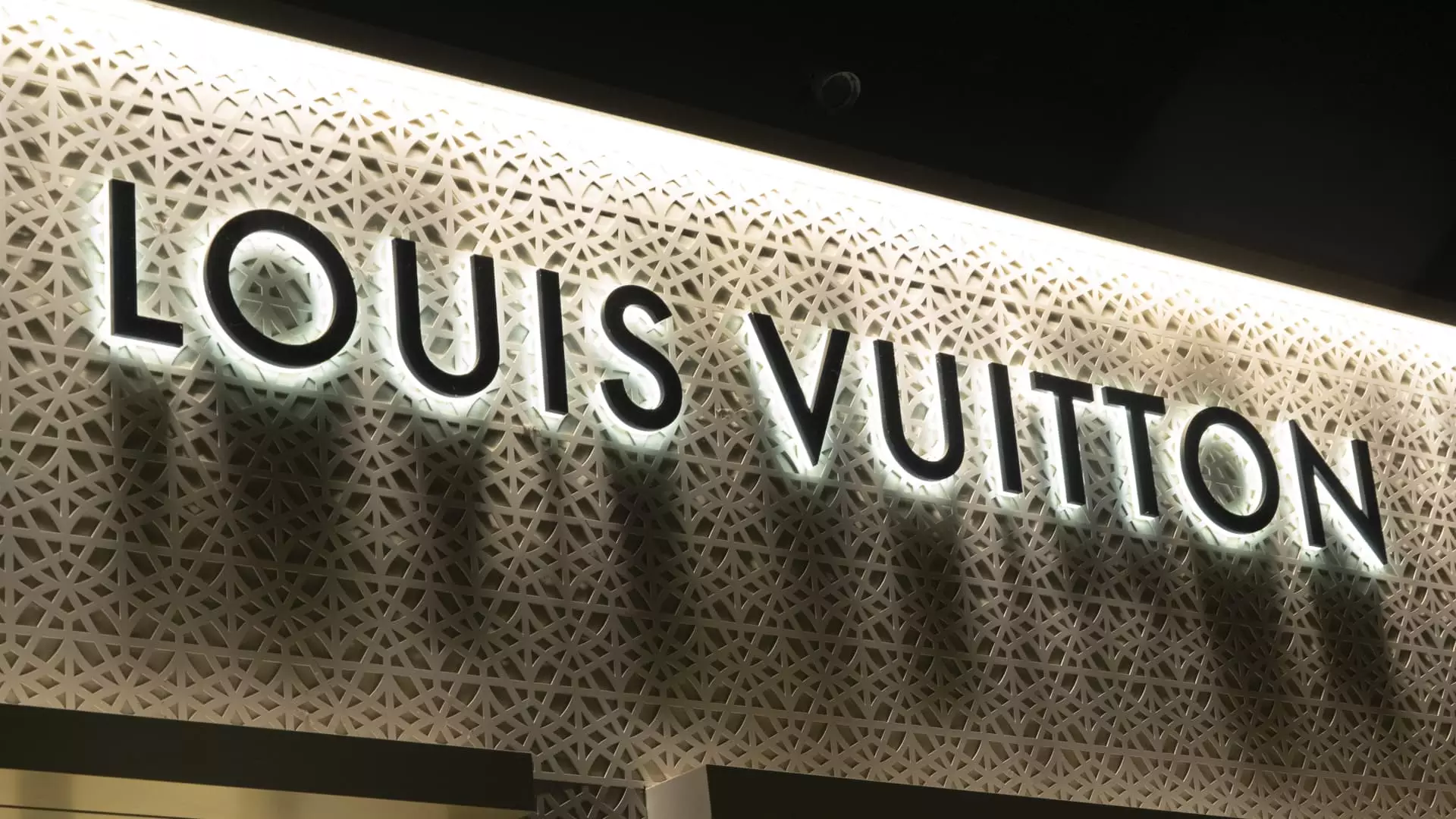LVMH, the world’s preeminent luxury goods conglomerate, has recently unveiled its financial performance for the year 2024, and the results exceed market expectations. With an astounding revenue of 84.68 billion euros (approximately $88.27 billion), the company not only surpassed the LSEG analysts’ forecast of 84.38 billion euros but also marked an organic growth rate of 1% compared to the previous year. This strong performance is particularly significant in light of the ongoing challenges facing the luxury industry globally.
The fourth quarter of the year witnessed an unexpected surge in sales, signaling a potential recovery in the high-end sector after experiencing its first drop since the onset of the pandemic. Notably, LVMH’s growth was predominantly driven by robust consumer spending in key markets such as Europe, the United States, and Japan. However, the company acknowledged persistent vulnerabilities in the Asia region, which continues to struggle with softer demand. This dichotomy highlights the shifting dynamics within the luxury market, where geographic preferences and spending habits are in flux.
Bernard Arnault, the chairman and CEO of LVMH, commented on the results, emphasizing the company’s resilience in the face of an unstable economic landscape. His assertion that LVMH’s historic strength and relevance have enabled the conglomerate to navigate turbulent times reflects a broader confidence in luxury’s ability to rebound. Arnault’s focus on strategic adaptability is crucial as the luxury sector confronts evolving consumer behaviors influenced by external economic pressures.
While LVMH’s overall results are promising, the performance across various segments presents a more nuanced picture. The selective retailing division, which includes prominent brands like Sephora, exhibited notably strong results, contributing to the group’s positive revenue figures. Conversely, the fashion and leather goods sector, a cornerstone of LVMH’s portfolio, alongside wines and spirits, showed signs of struggle. In particular, the cognac and spirits sales witnessed a significant downturn, prompting Arnault to predict recovery within the next two years as new leadership takes charge of this division.
The luxury market is currently at a crossroads, with a dynamic interplay of factors influencing consumer behavior. The recent performance of luxury brands such as Cartier’s parent company, Richemont, and Burberry, which reported lesser-than-anticipated sales declines, suggests a cautiously optimistic outlook across the sector. Jefferies analysts have noted that LVMH’s results serve as an essential barometer for the luxury goods industry, given its extensive diversification across numerous categories.
This viewpoint is particularly relevant as luxury markets adjust to the aftermath of fluctuating demand in Asia, a once-reliable source of growth. Consumers are now more discerning, making purchase decisions based on value, sustainability, and brand relevance in an increasingly competitive landscape.
As LVMH prepares for 2025, the company remains optimistic about steering through economic headwinds. Despite geopolitical uncertainties and changing consumer preferences, the robust growth trajectory demonstrated in 2024 positions LVMH favorably for the future. The company’s ability to innovate and adapt its offerings while maintaining the allure and exclusivity of its luxury brands will be paramount. As consumers begin to return to stores, propelled by a sense of normalcy and renewed confidence in spending, LVMH stands as a testament to the enduring strength of the luxury sector.
LVMH’s better-than-expected results provide hope not only for the conglomerate but for the entire luxury industry, underscoring the importance of resilience amid adversity.

